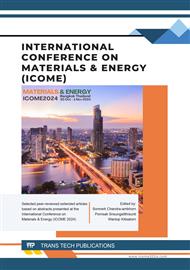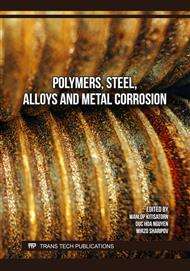p.3
p.11
p.21
p.33
p.41
p.49
p.57
p.65
Detection of Stress Corrosion Cracking in SS304 under Calcium Silicate Thermal Insulation Using Acoustic Emission Technique
Abstract:
Despite its remarkable structural strength, austenitic stainless steels such as SS304 are susceptible to stress corrosion cracking (SCC) under thermal insulation due to the synergism of cyclic loading and chloride-containing environments. This study aims to detect SCC for insulated SS304 samples using the acoustic emission technique (AET) as monitoring tool to characterize the various stages of SCC damage mechanism. As-received (AR) and sensitized (SEN) SS304 samples were prepared as per ASTM G30 and experimented with soluble chloride drip test under calcium silicate thermal insulation following ASTM C692. Both AR and SEN samples revealed SCC behavior correlated with measured acoustic signals. AR samples exhibited a single crack with low energetic signals, whereas SEN showed multiple cracks with higher energetic signal events. The difference can be attributed to microstructure change by heat sensitization and the enhancement of the corrosion environment under calcium silicate insulation when wetted by salt solution. The acoustic emission (AE) parameters were characterized and correlated with different stages of SCC phenomena, showing that AET is useful for predicting SCC to avoid catastrophic failures in industries.
Info:
Periodical:
Pages:
33-40
Citation:
Online since:
December 2024
Price:
Сopyright:
© 2024 Trans Tech Publications Ltd. All Rights Reserved
Share:
Citation:



